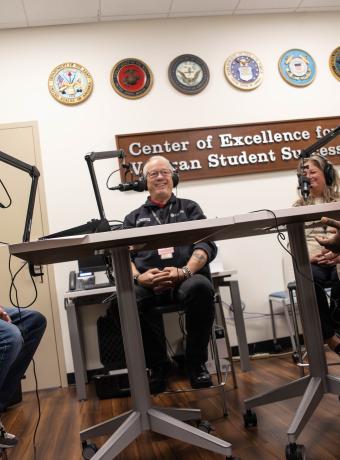
Attention all future Coco Chanels, Ralph Laurens, and Christian Diors: fashion design at Rowan College at Burlington County has a new pattern-making course that teaches the ins and outs of the state-of-the-art 3D garment-making software program CLO. Utilizing 3D cloth simulation technology, CLO transplants fashion design’s designing, fitting, and final production into a virtual space.
“I am super excited that our first CLO class is Digital Patternmaking,” said Fashion Design Program Coordinator Lisa Steinberg. “It has all the appeal that we’re missing from our program, and that’s what makes it so great.”
In the past few months, several RCBC faculty members were trained on the software to invent the curriculum for the new course. As they anticipate students becoming familiar with the program, they’re prepared to accommodate students at various stages of industry knowledge. Still, the course is the perfect spot for beginners.
“Anybody can jump right in,” said Steinberg. “You don’t even have to have that much experience, even on the computer.”
Inside the software, with just the click of a mouse, users can cycle through various fabrics, including silk satin, cotton, and brocade, and glean how they actually drape and move. After a piece is assembled, it can be placed directly onto an avatar, forgoing the sewing process necessary in real life.
“This is going to be revolutionary in the fashion industry,” said RCBC student worker Richie Cole, who demonstrated the software. “You’ll be able to design patterns here, see them live on an avatar, as opposed to countless hours of trying to draw patterns at home and seeing how they turn out with actual fabric.”
Another appealing feature of CLO is the ability to input exact measurements instead of adapting them to a typical size-8 standard pattern. Designers can now resize the avatars to fit garments to different body types instantaneously, including male, petite, and plus-size.
Fashion students who want to be secure in current industry standards will benefit considerably from acquiring the basics of CLO because “Technology in fashion has become number one,” Steinberg said. “They’re [the industry] looking for people who have that skill… when students have that on their resume, they’re going to see that new boost.”
Understanding CLO will also facilitate creating a line or portfolio, effortlessly demonstrating a student’s designs, use of prints, material selections, and more. It will help current industry professionals upskill outside of the classroom so they stay relevant in the field.
If you want to get a head start to the runway, consider signing up for the course (FAD 165); classes start on August 23. If you’re just starting, click here to learn more about RCBC’s fashion program.






